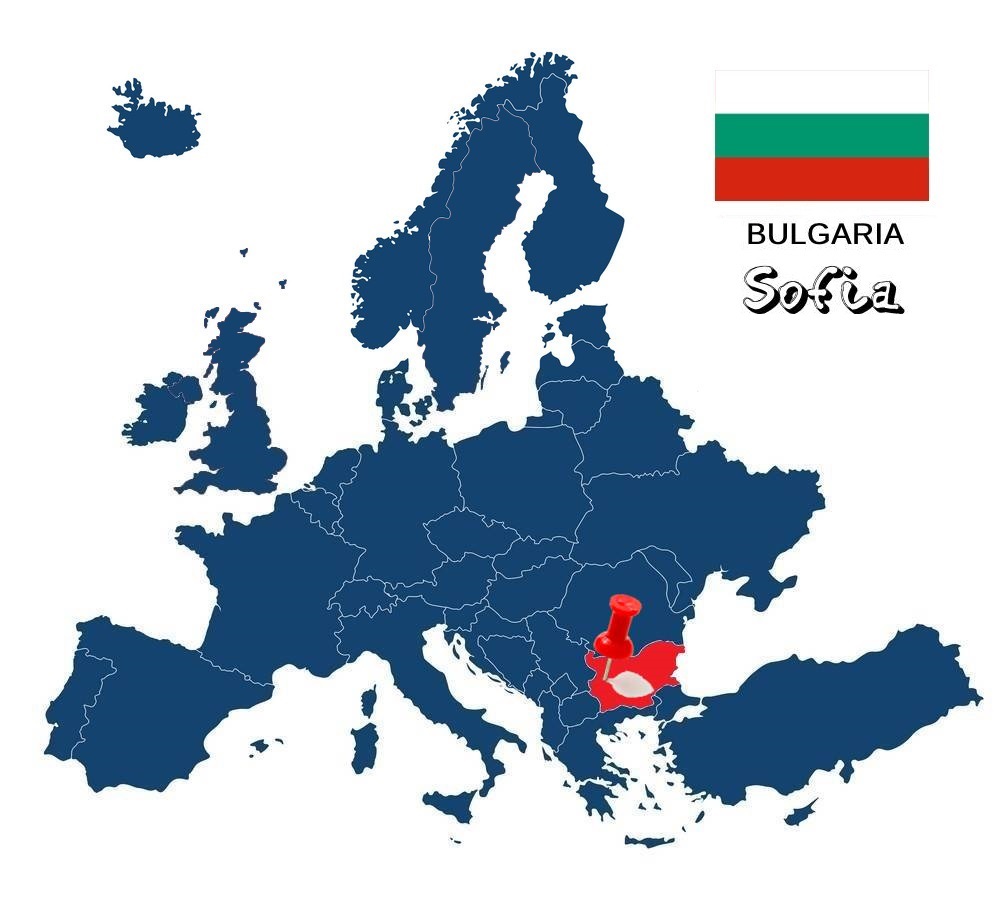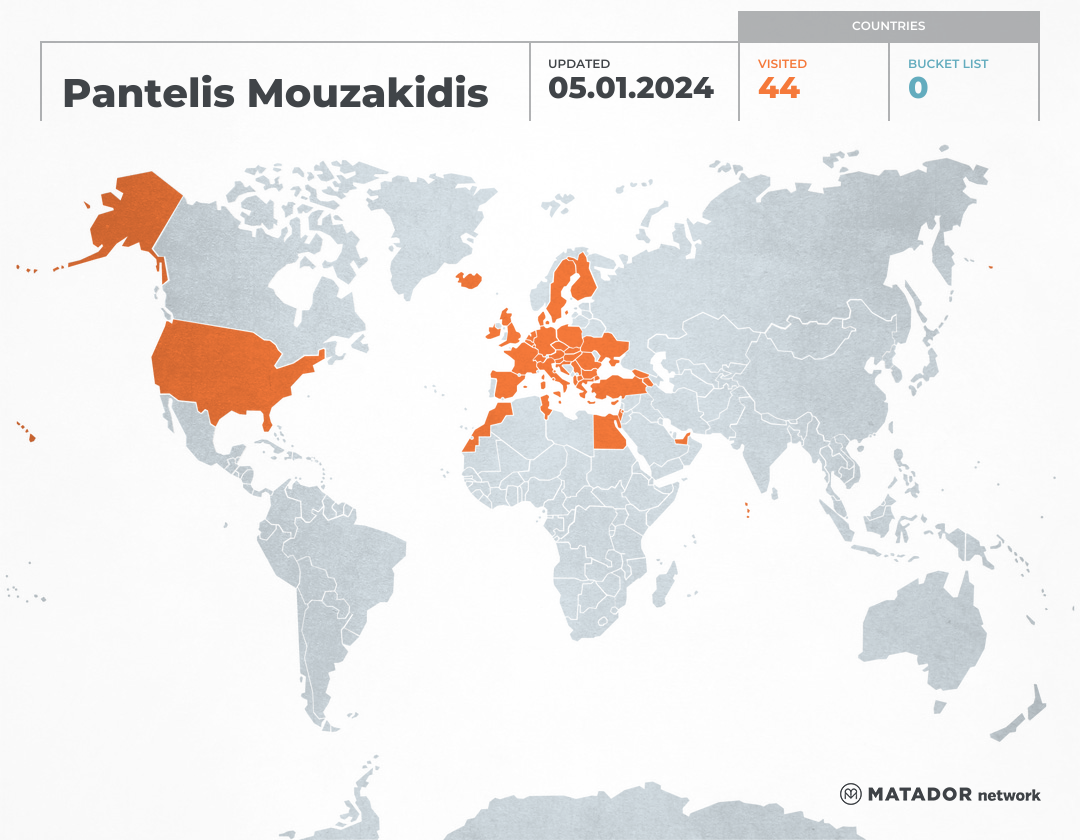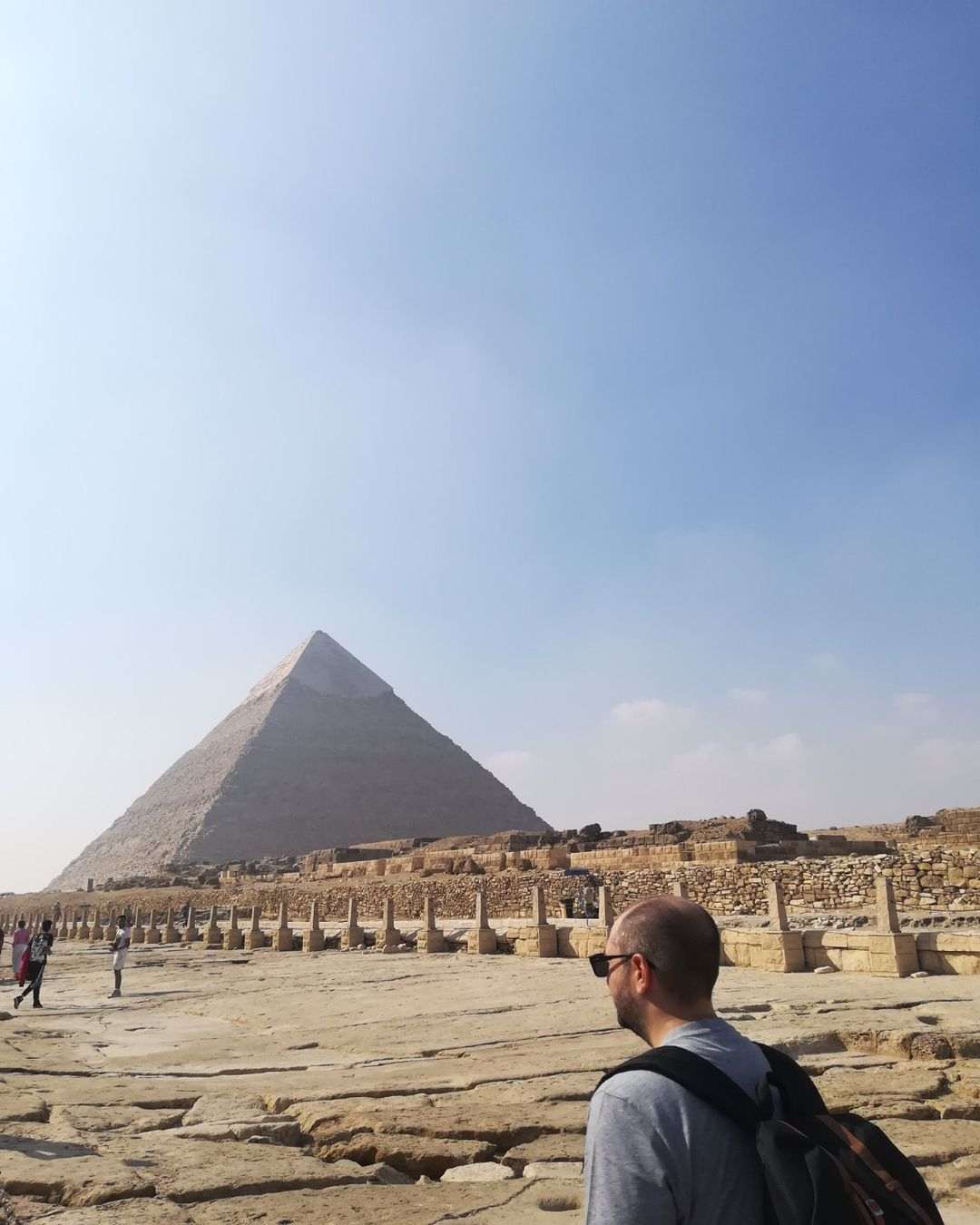
A green city built at the foot of the imposing Vitosa Mountain, which has begun to bloom and demands our attention! Unique churches, green parks, historical monuments and good food are just a few of the reasons to add it to your list!
A few words about the city
Sofia is the capital and largest city of Bulgaria. It is located in the west of the country, on the slopes of Mount Vitosa and in the center of the Balkan Peninsula. It is the 14th largest city in the European Union with a population of over 1.3 million inhabitants, and its name comes from the Church of Hagia Sophia in Istanbul. Sofia is considered one of the oldest cities in Europe, estimated to have been inhabited since 7,000 BC.! The city's slogan is "it grows but it doesn't age." Bulgaria's largest universities, cultural institutions and commercial enterprises are based there, making it the most important cultural, economic and political hub in the region! So I will try to introduce you to the city through my own eyes and share with you what I think should be seen by someone who visits it for the first time.
Sveti Aleksandar Nevsky
The pride of the city is none other than the Cathedral of St. Alexander Nevsky (Sveti Aleksandar Nevsky). It is one of the largest Orthodox Christian churches in the world and the second largest in the Balkans, after Saint Sava's Cathedral in Belgrade, Serbia! It is built in Neo-Byzantine style in the late 19th century and occupies an area of 3,170 square meters. Moreover, it is 53 meters high and can fit inside more than 10,000 believers at the same time! In the basement of the church there is a crypt-museum with many Greek icons and relics, while on the left of the altar in an elaborate reliquary are exhibited the relics of Saint Alexander Nevsky, donated by the Russian Orthodox Church! Entrance to the temple is free, and if you want to take pictures you have to pay a small fee!
Ruska tsarkva
A breath away from there, you will find another impressive church that is dedicated to Saint Nicholas, but is known simply as the Russian Church (Ruska tsarkva). Its construction began in the early 20th century and more specifically in 1907, on the site of a Muslim mosque, the Sarai Mosque, which was destroyed in 1882, after the liberation of Bulgaria from the Ottoman Empire. The temple was designed by Russian architect Mikhail Preobrazhensky in the style of Russian Renaissance architecture, with decoration inspired by the Muscovite Russian churches of the 17th century. Of great interest is the fact that the interior frescoes were painted by a team of artists led by Vasily Perminov, who also painted those in Alexander Nevsky Cathedral, while the five domes of the church are overlaid with gold! Here too, entry is free, but photos are charged!

Tsarkva Sveta Sofia
The Saint Sofia Church (Tsarkva Sveta Sofia), which is also the oldest surviving church in the city, closes the triptych of the temples of the region. This particular church is particularly important for the city, since it gave its name to the Bulgarian capital which until then was known as Sredets. The building we see today was built in the middle of the 6th century AD on the site of an older church; however it underwent many modifications in the 14th century! It is one of the most valuable pieces of early Christian architecture in southeastern Europe! The floor of the temple is covered with complex early Christian mosaics with plant and animal motifs. In addition, the Saint Sofia Church is located in the middle of an ancient necropolis and many tombs have been discovered, about 100, below and near the structure. Some of these tombs even feature frescoes! As in the above churches admission is free!

Rotonda Sveti Georgi
As you will have already realized, in Sofia you will find many unique and special churches that deserve your interest! One of them is the Church of St. George or simply Rotonda (Rotonda Sveti Georgi), which is built of Late Antiquity red brick. The original building, constructed in the early 4th century, functioned as Roman baths, but was converted into a church during the Byzantine Empire. This early Christian Church is considered one of the oldest buildings in modern Sofia and is famous for its beautiful frescoes of the 12th, 13th and 14th centuries inside the central dome. More specifically, three layers of frescoes have been discovered, with the oldest dating to the 10th century! Unfortunately, many of these frescoes were destroyed during the Ottoman occupation when the building was used as a mosque, but several were restored in the 20th century and we can now admire them with respect. Entrance is free of course!

Sveta Nedelya
The last Christian building I will refer to is the Church of Saint Kyriaki-Nedelia (Sveta Nedelya), which is located in the center of the city and is a meeting point for locals and tourists! It is an Eastern Orthodox cathedral, dating from the 10th century. This sacred building has suffered many disasters and modifications over the centuries, remaining however as one of the landmarks of the city! In fact, the relics of Serbian King Stefan Uroš II Milutin are kept in this church. There is no entry fee here!

Naroden teatar Ivan Vazov
The state theatre of Ivan Vazov (Naroden teatar Ivan Vazov) is the national theatre of Bulgaria, the oldest and most remarkable theatre in the country! Purely subjectively, I would say that it is also the most beautiful building in Sofia! It is located in the center of the city, facing the City Garden (Gradska gradina) and was founded in 1904 by the artists of the Salza i Smyah group (Tears and laughter), while it’s original name was simply National Theatre. Its current name comes, of course, from the prominent Bulgarian writer Ivan Vazov! The bombing of Sofia in World War II caused significant damage to the building, but it was successfully reconstructed initially in 1945, then in the years 1971-1975, while a restoration work of 100,000€ was implemented in 2006! The National Theatre has a well-equipped main stage with 750 seats, a smaller one with 120 seats and a further 70 seats on the fourth floor. Finally, the facade of Ivan Vazov's state theater is depicted on the obverse of the 50 Leva note , issued in 1999 and 2006!

Statuya na Sofiya
The Statue of Sophia (Statuya na Sofiya) is an imposing bronze statue in the center of the city, which is also the symbol of the capital! It is 8.08 meters high and was erected in 2000, on the spot where once stood a statue of Lenin! It is a creation of the sculptor Georgi Chapkanov and is adorned with the symbols of power (wreath), fame (wreath) and wisdom (owl). The crown is also a reference to the goddess of fortune, Fortune, inspired by the old emblem of Sofia dating back to 1900! The truth is, however, that the Statue of Sophia was considered too erotic and idolatrous to be referred to as a saint, while it is still very controversial.

Banya bashi dzhamiya
In Bulgaria there is freedom of religion and although we are talking about a Christian country you will find everywhere, besides churches, dozens of religious buildings of other religions! Perhaps the most important of these is the the Banya Bashi Mosque (Banya bashi dzhamiya), which is located in the center of the city and functions normally to this day! The mosque was designed by the famous Ottoman architect Mimar Sinan and completed in 1566, the years when the Ottomans were in control of the city. It takes its name from the phrase Banya Bashi, meaning many baths, as it is built over natural spas. If you are observant you may even see steam rising from the ventilation holes in the ground near the walls of the mosque. Finally, this particular mosque is famous for its large dome, 15m in diameter, and its minaret. Of course, there is no entrance fee, and everyone is allowed to enter, as long as they take off their shoes!

Cultural Complex "Ancient Serdika"
During the construction of the second line of the Sofia underground railway, the workers were confronted with the discovery of an archaeological treasure! Archaeologists immediately took over and concluded that these are remnants of the ancient Roman city of Serdika (Cultural Complex "Ancient Serdika"). The complex revealed, covers an area of about 9000 square metres that once included eight streets, an early Christian basilica, six large buildings, thermal springs and a medieval church all on a basement level. They date to the period from the 1st to the 6th century AD, while early specimens of a water and sewer system have still been found, as well as elaborate tiles on the floor. The entire archaeological site is open to the public and admission is free!

Bul. VItosa
If we were looking for the most central point and the place where the heart of the city beats, I find that this would undoubtedly be the Vitosha Avenue (Bul. VItosa). It is a pedestrian walkway with a length of 2.7 kilometers, named after Mount Vitosha located near Sofia. It is the country's largest trade route and one of the largest in the Balkans, and according to a 2007 study by Cushman & Wakefield, Inc., Vitosha Avenue is the 22nd most expensive shopping street in the world! It starts from the square of Saint Kyriaki-Nedelia and reaches the South Park and the National Palace of Culture! There you will find various restaurants, cafes and bars, fashion shops and boutiques selling luxury products.

Natsionalen dvorets na kulturata, NDK
At the end of Vitosha Avenue dominates the National Palace of Culture or simply NDK (Natsionalen dvorets na kulturata, NDK). This is one of the largest multifunctional conference and cultural centers in the world, which was opened in 1981 to celebrate the 1300th anniversary of Bulgaria! It includes 15 rooms and 55 meeting spaces, with a total capacity of over 8,000 seats! There, in addition to various cultural events, concerts and music concerts are held, while in some rooms works of painting, sculpture, woodcarving and other genres are exhibited. But apart from the main building, the whole park is very impressive! It is a green oasis in the center of the city, full of fountains, artificial lakes and of course a view to the unique Mount Vitosha!

Museums
In Sofia there are many museums and art galleries that deserve your attention. The first one I recommend to visit is the former Central Baths (Tsentralna mineralna banya), which today functions as a Historical Museum! This is a very impressive building, which was built at the beginning of the 20th century near the former Turkish bath (then destroyed) and was used as the city's public baths until 1986. The building was then closed due to its poor condition and possible collapse. roof. It was then partially reconstructed and thoroughly cleaned to house the Sofia Historical Museum! The entrance costs 6 leva, which is about 3e.

Equally interesting is the National Archaeological Museum (Natsionalen arheologicheski muzey), which is housed in a mosque from 1899. It has important finds from Roman times, mainly impressive busts, frescoes and mosaics. Entrance to the museum costs 12 leva, i.e. about 6e.

Finally, do not miss a visit to the National Gallery (Natsionalna hudozhestvena galeriya), housed in the former royal palace of Bulgaria. After the abolition of the monarchy and the establishment of a communist government in Bulgaria, most of the palace was given to the National Gallery, after its building was destroyed by bombing in 1943 and 1944. All the paintings of the previous gallery, together with the royal collection of works art made up the collection that one can admire today! The entrance costs 6 leva, which is about 3e.

How to go
There is no direct flight from Thessaloniki to Sofia at the moment, so if you want to get to the city by air, you will have to make at least one stopover. The best solution is to go with Aegean to Athens and from there with the same company to Sofia, with a total cost of 201e round trip. Of course, the distance by road is about 3.5 hours and the road is particularly good, so the most appropriate solution is to go with your own means of transport. All you will need is a vignette, which you can issue in advance online or buy at gas stations upon entering the country!
Where to stay
The truth is that Sofia is not the most touristic capital of Europe and combined with the fact that they do not have euros but leva, they make the matter of accommodation "a breeze". In the city the quality-price ratio is at an excellent level, so you can definitely find a good place to stay at reasonable prices! My suggestion is the Best Western Terminus Hotel, a 4-star hotel with private parking, a breath away from the Central Railway Station!
How to move
Sofia has an excellent public transport system, including metro, trams, buses, and trolleys. The public transport ticket is single, which means that you can use it for everything and it is graded according to the time period or the days you will issue it. Something very interesting is the fact that the cash desks and machines only accept cash! But there is a special point that you can pass by simply tapping your debit card and you will be charged at the end of the day, depending on how many times you have tapped!
What to eat
Bulgarian cuisine is really special and delicious, with dishes cooked mainly in the oven or the pot! Some of the most characteristic dishes and products of Bulgaria are Sirene po Shopski (white cheese), Shopska salad which is very similar to the Greek sallad, Tarator soup (cold cucumber soup), Panagyurski eggs (poached eggs with yogurt, tomato sauce and a little garlic), Shkembe Chorba (tripe), Lukanka (salami), Banitsa (cheese pie), Mish-Mash (something like a turlo), stuffed peppers and finally Mekitsa, which is considered the Bulgarian donut! To try local flavors I recommend Shtastlivetsa restaurant Vitoshka and Moma Bulgarian Food and Wine, while for coffee and sweets Lavené Pâtisserie & Café.
Useful information

In Sofia we travel with a new type of Passport or Police ID, where the details are written in Latin characters.
In Sofia the language used is, of course, Bulgarian. But the majority, if not all, speak English, so ask for clarification in English.
The currency of the country is Leva (BGN) and its exchange rate at the moment is €1 = 1.95 Leva.
Sofia has the same time as Greece (GMT +2).
Convert your money either at the dozens of banks that exist in the city, or at the exchange offices, which list the exchange rates, since they take a very small commission. In many shops they also accept euros.
Getting to and from Sofia Airport is simple, as there are metro and buses that will quickly take you to the city center.
The Greek embassy in Sofia is located at 33, San Stefano Str. and her phone is +3592 8433085.
The best time to visit the Bulgarian capital is from May to September, when the temperatures are relatively high, everything is in bloom and you will be able to enjoy the parks and outdoor activities.
Recommended excursions → Plovdiv, Bansko, Rila Monastery

If this article seemed interesting or contributed to your quality information, then you can like my facebook page: o_thessalonikios or follow me on instagram!
Mouzakidis Pantelis








